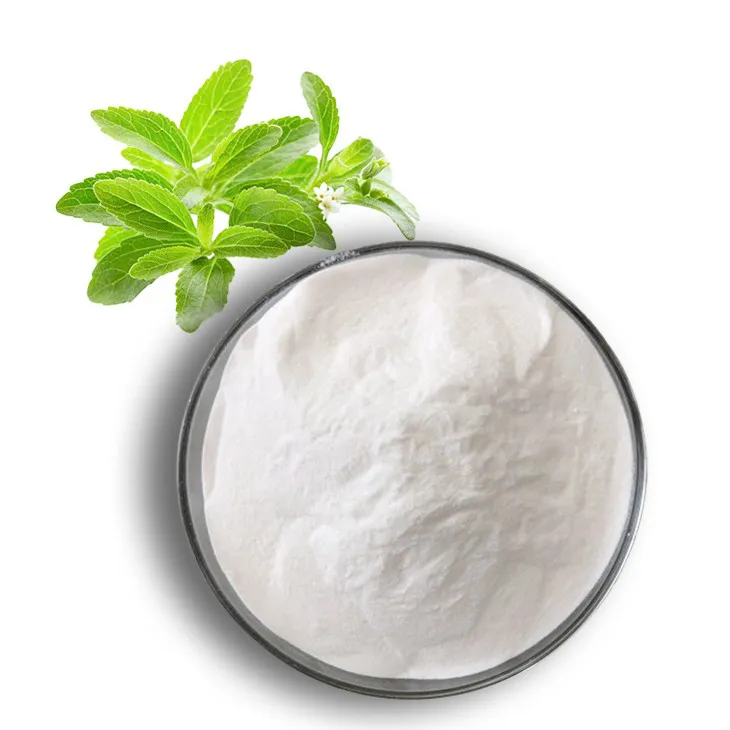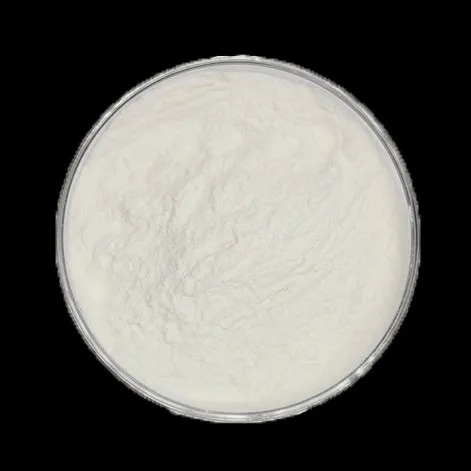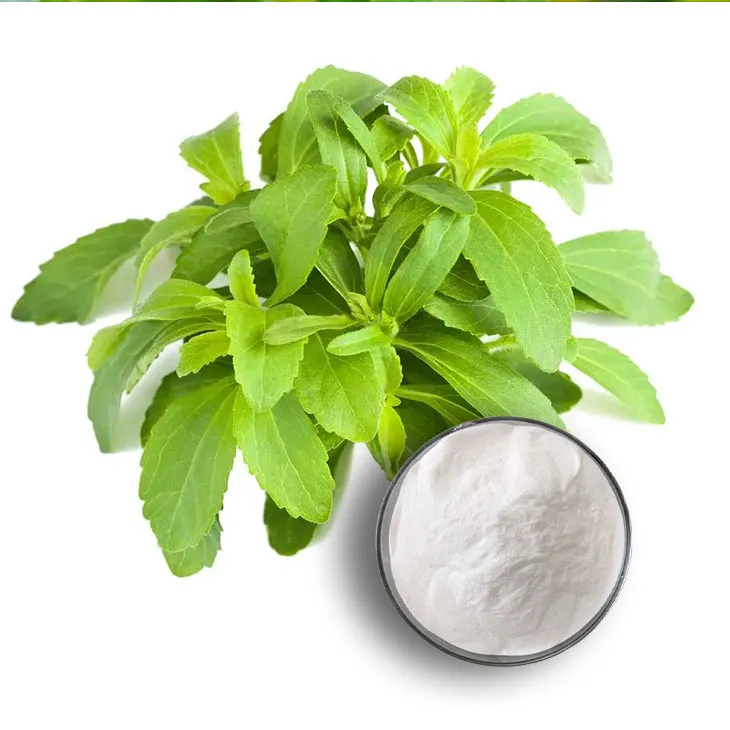- 0086-571-85302990
- sales@greenskybio.com
Professional manufacturers supply stevia extracts.
2024-11-30

Introduction to Stevia
Stevia is a remarkable plant that has been used for centuries in some parts of the world for its sweetening properties. It is native to South America and has a long history of traditional use. In recent years, it has emerged as a popular alternative to traditional sweeteners in the global market. The plant itself is a small shrub with green leaves that contain the sweet compounds. These compounds are what are extracted to create Stevia Extract, which has a potency far greater than that of regular sugar.

The Role of Professional Producers
Quality Assurance through Plant Selection
Professional producers of Stevia Extract play a fundamental role in ensuring the quality of the final product. One of the initial and crucial steps they take is the careful selection of stevia plants. They often source their plants from regions where the climate and soil conditions are optimal for stevia growth. For example, areas with the right amount of sunlight, proper rainfall, and well - drained soil are preferred. By choosing plants grown in such ideal conditions, producers can be confident that the raw material for extraction is of high quality. This is because plants grown in favorable environments tend to have a higher concentration of the sweet compounds that are desired in the extract.
Advanced Extraction Techniques
Once the appropriate plants are selected, professional producers employ advanced extraction techniques. These techniques are designed to isolate and purify the sweet compounds from the stevia leaves. One common method is solvent extraction. In this process, a suitable solvent is used to dissolve the sweet components from the plant material. However, it is crucial that the solvent used is safe for human consumption and complies with international regulations. Another technique is supercritical fluid extraction, which uses a supercritical fluid (such as carbon dioxide) to extract the desired compounds. This method has the advantage of being more environmentally friendly and can often produce a purer extract.
Meeting International Standards
The production of Stevia Extract by professional producers is highly regulated to meet international quality and safety standards. These standards cover various aspects of the production process, from the sourcing of raw materials to the final packaging of the extract. For instance, in the European Union, stevia extract used in food products must meet specific purity requirements and safety regulations. In the United States, the Food and Drug Administration (FDA) has also set guidelines for the use of stevia in food and beverages. Professional producers ensure that their production facilities are in compliance with these regulations, which includes proper sanitation, quality control testing at different stages of production, and accurate labeling of the final product.

Features of Stevia Extract
High Sweetness Intensity
One of the most notable features of stevia extract is its high sweetness intensity. It is significantly sweeter than regular table sugar. In fact, stevia extract can be up to 200 - 300 times sweeter than sucrose. This means that only a very small amount of stevia extract is needed to achieve the same level of sweetness as a much larger quantity of sugar. For example, if a recipe calls for 1 cup of sugar, only a fraction of a teaspoon of stevia extract may be required to achieve a similar level of sweetness. This high sweetness intensity makes it a very cost - effective sweetener in industrial applications such as the food and beverage industry.
Low - Calorie Alternative
Another important feature of stevia extract is that it is a low - calorie alternative to sugar. While sugar is a high - calorie ingredient, stevia extract contains negligible calories. This makes it an ideal choice for people who are watching their calorie intake, such as those on a diet or trying to lose weight. It is also suitable for individuals with certain medical conditions, such as diabetes. For diabetics, controlling blood sugar levels is crucial, and using stevia extract instead of sugar can help them enjoy sweet - tasting foods and beverages without significantly affecting their blood glucose levels.
Natural and Pure
Stevia extract supplied by professional producers is a natural and pure product. Since it is derived from the stevia plant, it does not contain any artificial additives or preservatives. This natural origin is appealing to consumers who prefer natural products over synthetic ones. The purity of the extract also ensures that there are no unwanted flavors or contaminants that could affect the taste or safety of the product. It can be used in a variety of applications, from sweetening a cup of coffee or tea to being used in more complex food and beverage formulations.

Applications in Different Industries
Food and Beverage Industry
- In the food and beverage industry, stevia extract has a wide range of applications. It can be used in the production of soft drinks, where it provides the necessary sweetness without the high calorie content associated with sugar - sweetened beverages. For example, many diet sodas now use stevia extract as a primary sweetener.
- It is also used in the production of confectionery products such as candies and chocolates. By using stevia extract, manufacturers can reduce the calorie content of these treats while still maintaining their sweet taste. This is especially important in the current market where consumers are increasingly health - conscious.
- Another area of application is in the production of baked goods. Stevia extract can be used in combination with other sweeteners or ingredients to replace some or all of the sugar in recipes. This allows for the creation of low - calorie or diabetic - friendly baked goods such as cakes, cookies, and muffins.
Pharmaceuticals
- In the pharmaceutical industry, stevia extract has potential applications. It can be used in the formulation of oral medications, especially those that need to be palatable for patients. Since it is a natural sweetener, it can improve the taste of bitter - tasting drugs without adding significant calories. This can enhance patient compliance, as patients are more likely to take medications that taste better.
- Stevia extract may also have potential in topical pharmaceutical products. For example, in some ointments or creams, it could be used as a natural sweetener or flavoring agent to improve the overall acceptability of the product for patients.
Cosmetics
- Stevia extract is finding its way into the cosmetics industry as well. In some lip balms and lipsticks, it can be used as a natural sweetener to give a pleasant taste. This is particularly useful for products that may accidentally be ingested, such as lip products.
- It may also be used in some skincare products as an ingredient with potential antioxidant properties. Although more research is needed in this area, the natural origin of stevia extract makes it an interesting candidate for use in cosmetics.

Research and Development in Stevia Extract Production
Improving Extraction Methods
Professional producers are constantly investing in research and development to improve the extraction methods for stevia extract. They are exploring new solvents and extraction techniques that can further enhance the purity and yield of the extract. For example, researchers are looking into the use of ionic liquids as solvents for stevia extraction. Ionic liquids have unique properties that may allow for more efficient extraction of the sweet compounds from the stevia leaves. Additionally, new combinations of extraction techniques are being studied to optimize the production process.
Enhancing Product Quality
Another focus of research and development in stevia extract production is enhancing the product quality. This includes improving the taste profile of the extract to make it more similar to that of sugar. Some stevia extracts may have a slightly bitter or licorice - like aftertaste, and producers are working on ways to minimize this. They are also looking into methods to increase the stability of the extract, especially in different environmental conditions and during storage. By enhancing the product quality, producers can expand the market for stevia extract and meet the growing demands of consumers.
The Future of Stevia Extract
As consumer awareness about health and wellness continues to grow, the demand for stevia extract is likely to increase. Professional producers will play a key role in meeting this demand. With ongoing research and development, it is expected that the quality and applications of stevia extract will continue to expand. In the future, stevia extract may become an even more common ingredient in a wider range of products, not only in the food, pharmaceutical, and cosmetics industries but also in other areas where a natural, low - calorie sweetener is desired. However, challenges such as maintaining consistent quality across different production batches and competing with other sweeteners will also need to be addressed. Overall, the future of stevia extract looks promising, especially with the continued efforts of professional producers to innovate and improve.
FAQ:
What are the main advantages of stevia extract?
Stevia extract is known for its intense sweetness, which is many times sweeter than sugar yet has negligible calories. It is an ideal substitute for those who are health - conscious or have dietary restrictions such as diabetes.
How do professional producers ensure the quality of stevia extract?
Professional producers start with carefully selected stevia plants, usually grown in optimal conditions. They use advanced extraction techniques and the production process is highly regulated to meet international quality and safety standards. They also invest in research and development to continuously improve the extraction methods and product quality.
What industries can stevia extract be used in?
Stevia extract can be used in various industries, including the food and beverage industry, pharmaceuticals, and cosmetics.
How is stevia extract different from sugar?
Stevia extract is much sweeter than sugar but has almost no calories. Sugar, on the other hand, is a high - calorie sweetener. Also, stevia extract is a natural alternative that can be used by people with certain dietary restrictions, which is different from sugar.
What makes the extraction process of stevia extract special?
The extraction process of stevia extract is special because it involves advanced techniques. Professional producers start with well - selected stevia plants and use these techniques to obtain pure stevia extract. The process is also highly regulated to ensure quality and safety.
Related literature
- The Production and Quality Control of Stevia Extracts"
- "Stevia Extract in the Modern Food Industry: A Comprehensive Review"
- "Advances in Stevia Extract Research and Application"
- ▶ Hesperidin
- ▶ Citrus Bioflavonoids
- ▶ Plant Extract
- ▶ lycopene
- ▶ Diosmin
- ▶ Grape seed extract
- ▶ Sea buckthorn Juice Powder
- ▶ Fruit Juice Powder
- ▶ Hops Extract
- ▶ Artichoke Extract
- ▶ Mushroom extract
- ▶ Astaxanthin
- ▶ Green Tea Extract
- ▶ Curcumin
- ▶ Horse Chestnut Extract
- ▶ Other Product
- ▶ Boswellia Serrata Extract
- ▶ Resveratrol
- ▶ Marigold Extract
- ▶ Grape Leaf Extract
- ▶ New Product
- ▶ Aminolevulinic acid
- ▶ Cranberry Extract
- ▶ Red Yeast Rice
- ▶ Red Wine Extract
-
Baicalin
2024-11-30
-
Eyebright Extract
2024-11-30
-
Lycopene
2024-11-30
-
Cactus Extract
2024-11-30
-
Kelp Extract Powder
2024-11-30
-
Tongkat Ali Extract Powder
2024-11-30
-
Oat Straw Extract Powder
2024-11-30
-
Ivy Extract
2024-11-30
-
Moringa powder
2024-11-30
-
Grapefruit Seed Extract Powder
2024-11-30





















